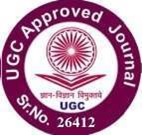Journal of Analysis and Computation
Journal of Analysis and Computation

MAINTAINING AUTHENTICITY OF DIGITAL CERTIFICATE
USING BLOCKCHAIN
Sandeep U Kadam¹, Sunil G. Dambhare², Chaitali R Shewale³, Rupesh J Patil4
Associate Professor, Bhivarabai Sawant College of Engineering and Research, Pune, India¹
Professor, Dr. D. Y. Patil Institute of Engineering Management and Research, Pune, India²
Assistant Professor, Keystone College of Engineering, Pune, India³
Principal Navsahyadri Grooup of Institutes Faculty of Engineering, Pune, India
Keywords – Blockchain, digital certificate, encryption.
ABSTRACT
According to several researches huge number of graduates are passing out everyyear, the certificate issuing authorities are seems to be compromised for the security credentials of student data. Due to the lack of effective antiforge mechanism, graduation certificates which are copied often get noticed. We can conquer this problem by using digital certificate, though security issues still exist. Blockchain is one of the most recent technologies that can be adopted for the data security. It helps to overcome the problem ofcertificate forgery because of its unmodifiable property. Digital certificate is issued using following procedure. First from student portal and college portal encrypt the entered marks. Then pass this encrypted string to the blockchain. Company portal accepts the marks string from both the portal and passes it to the verification portal. Verification portal decides whether marks are z1authenticated or not. It will provide the demand unit to verify the genuineness of the paper certificate through mobile phone scanning or website inquiries. Because of the unmodifiable properties of the blockchain, the system not only enhances the authenticity of various paper-based certificates, but also electronicallyreducesthe lossrisks of varioustypes of certificates.
IMPROVING SECURITY IN INTHE CLOUD USING
GEO-ENCRYPTION ANDATTRIBUTE BASED
ENCRYPTION
Abu Salim and Rajesh Kumar Tiwari
Department of Computer Science and Engineering, Glocal School of Technology and Computer Science.
Global University, Saharanpur, U.P.
Keywords – fine-grained access control, Cryptography, Geo Encryption, Security issues, CP- ABE, Cloud Computing, Attribute Based Encryption.
ABSTRACT
Cloud computing is a utility-based computing model that offers numerous advantages to the companies who use it, but concerns about data security are slowing widespread adoption of the model. Data security, network security, and infrastructure security are all areas that provide issues in terms of security. The use of cryptography is one method for ensuring the safety of stored data. If we incorporate information about the location in the method used for encrypting and decrypting data, then we will be able to link access to the data with the location, which will allow data to be accessible only from the places that have been defined. In this research, we offer a technique for implementing safe access control to outsourced data that is based on symmetric cryptography, location-based cryptography, and ciphertext policy – attribute-based encryption (CP ABE). Prior to uploading the data onto the server, the symmetric key is used to encrypt the data, while the CP-ABE algorithm is used to encrypt the secret key as well as the location lock value. The user will download encrypted material as well as the symmetric secret key that has been XORed with the value of the Location Lock. Using his attributes-based secret key, the user will be able to retrieve the first XORed value of the Symmetric secret key and the Location Lock value. It is possible to extract a value for the GPS location lock by using anti-spoofing software, and this value may then be utilised to recover the symmetric secret key. We decided to go with the Message Authentication Code (MAC) so that we could guarantee the data’s availability and integrity. This protocol may be used in the bank, the government organisation, the military services, or any other business that has its offices or work location at a set site, so that data access can be confined to that location. It can also be used in any other sector that has a fixed place of work.
ANALYSIS OF STRONG AND SELECTIVE MUTATION TESTING
TECHNIQUES FOR PYTHON PROGRAM
Sandeep U Kadam¹, Sunil G. Dambhare², Chaitali R Shewale³, Rupesh J Patil4
Associate Professor, Bhivarabai Sawant College of Engineering and Research, Pune, India¹
Professor, Dr. D. Y. Patil Institute of Engineering Management and Research, Pune, India²
Assistant Professor, Keystone College of Engineering, Pune, India³
Principal Navsahyadri Group of Institutes Faculty of Engineering, Pune, India4
Keywords – Mutation Testing, Test Case, Mutant, Mutation operators, Mutation Score.
ABSTRACT
Software Testing is the process of ensuring quality of software through detailed investigating with objective of finding the faults in it. Software testing is associated with the Test Suit which is constituted of Test Cases for checking correctness of the software system. It is very important to have stronger Test Suit and adequacy in terms of Test Cases for ensuring quality of Software. Mutation Testing is white box testing method in which test suit is assessed for its quality. Many mutation testing techniques are proposed by researchers over last few decades for testing the test cases. The Proposed study presents the detailed analysis of selective and strong mutation testing techniques applied to the python programs from differ applications. Mutant generation is one of the most important task in mutation testing. Python is one of the most popular programing languages. The experimental analysis is carried out using open source MutPy for creating mutants with different mutation operators.